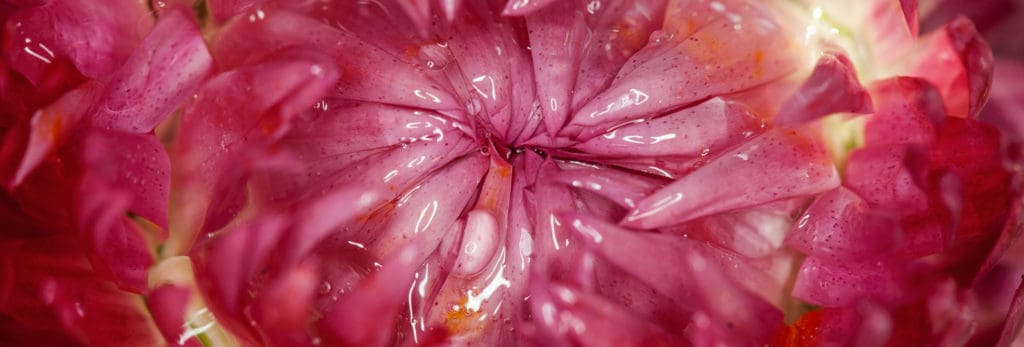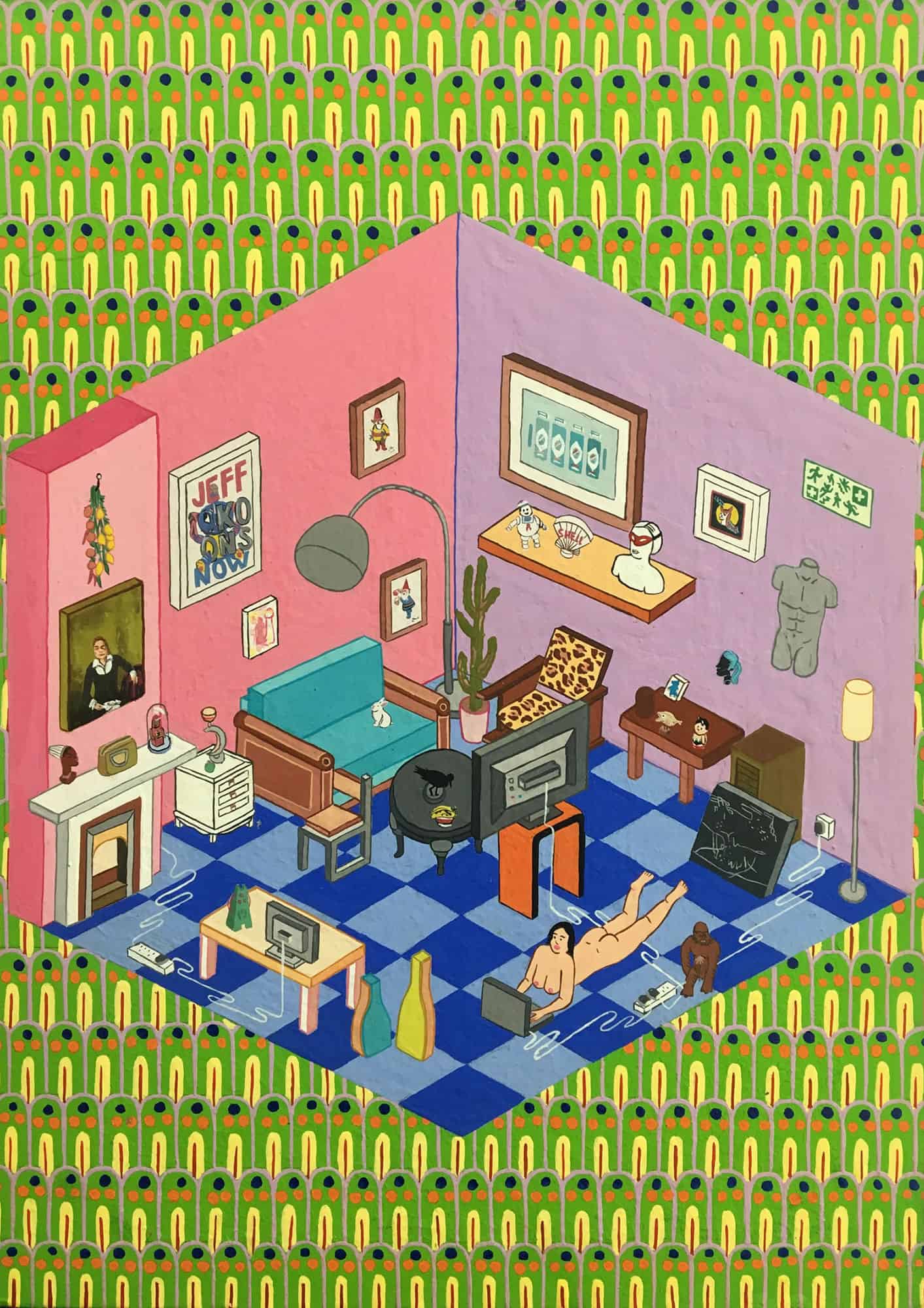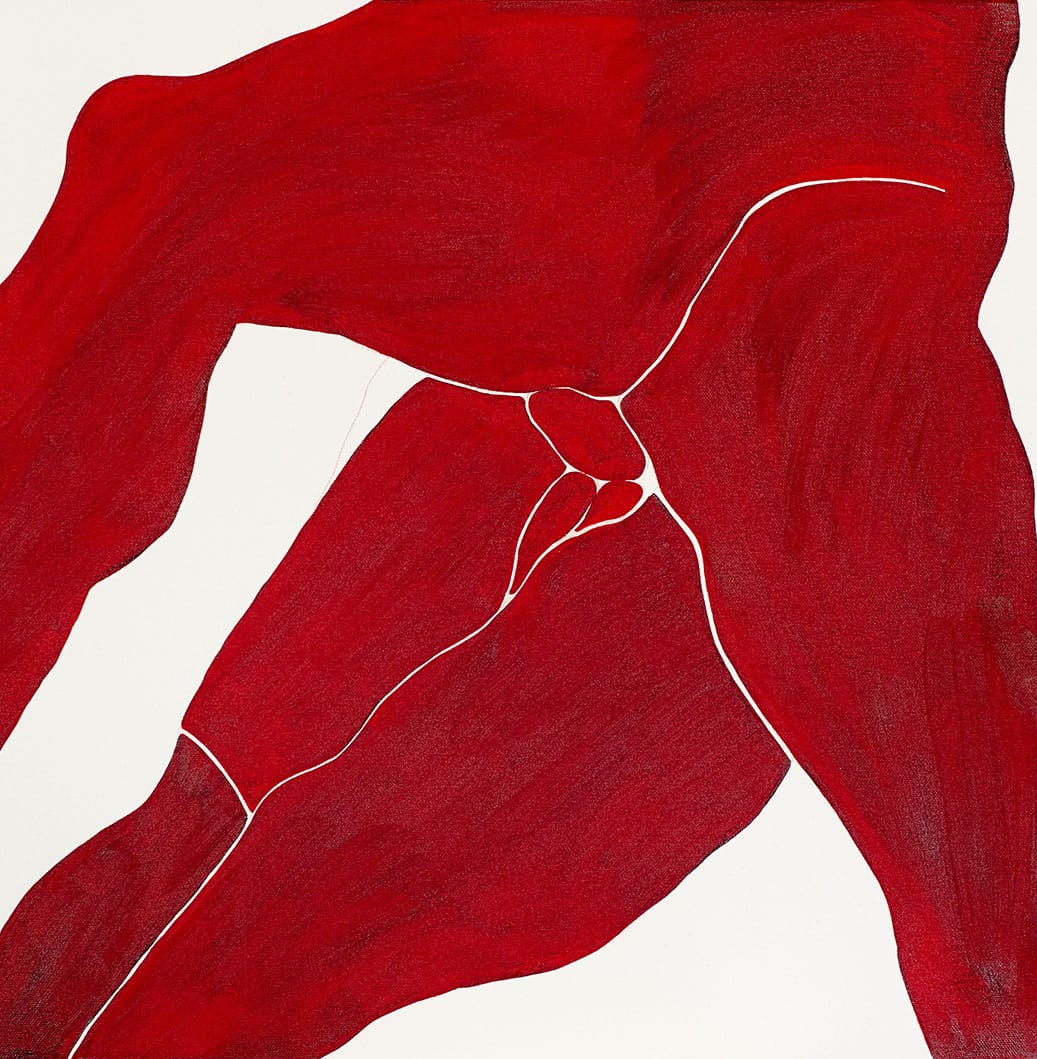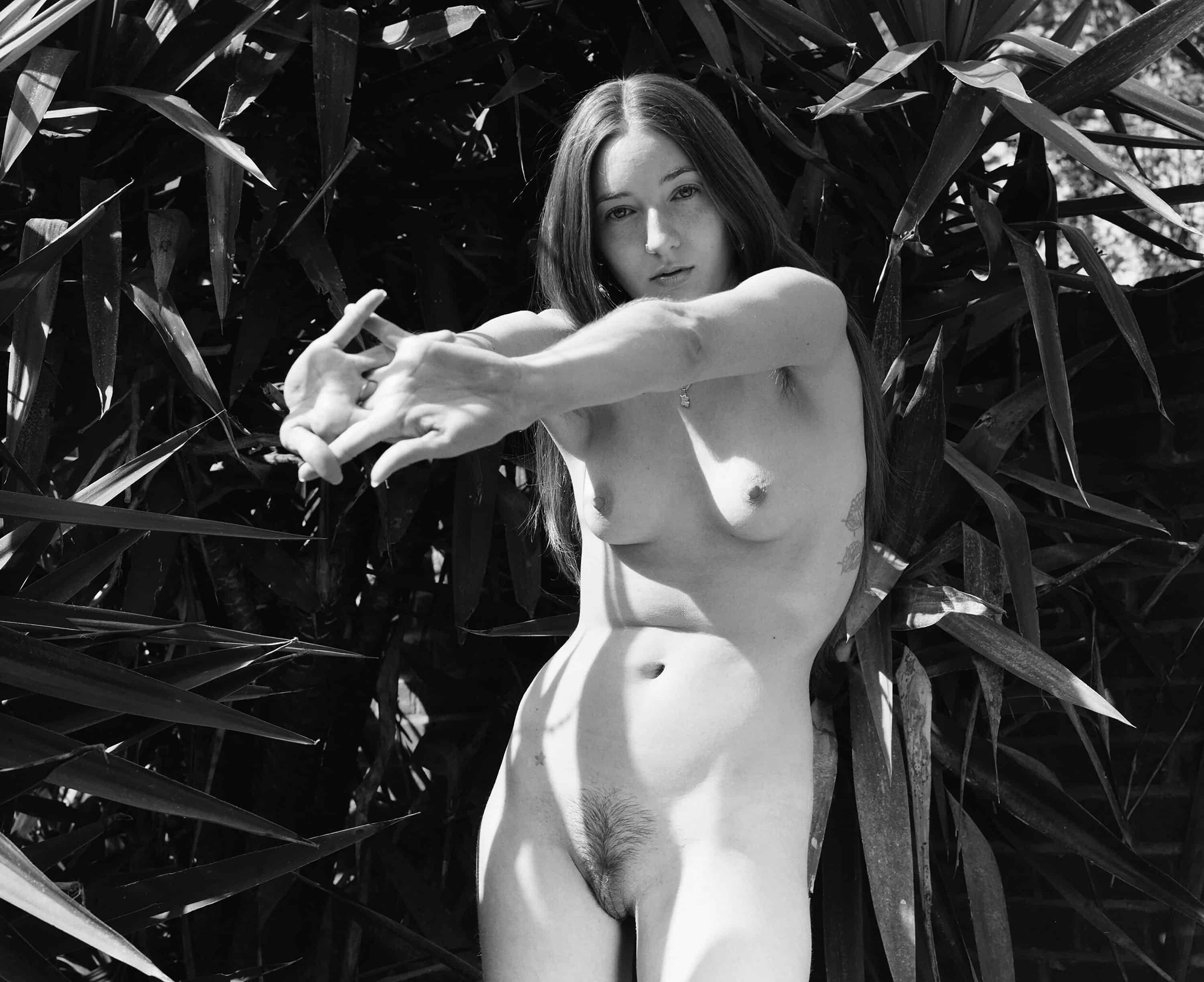Maisie Cousins
A slimy spineless creature revolves around the wet plane. Its membrane quivers over a finger, worming its way into the familiar pulp of human breast. What an imposter, perverting the anatomical order of the species, between man and the wild untamed, a vulgar encounter (‘slug’, 2015). Maisie Cousins’ (b. 1992, London) raw photographic compositions might make you squirm, cause you to recoil, or maybe relish in their lewd, glorious detail. In ‘peonie’ (2015) the entrails of a kiwi fruit comingle with the paper-thin petals of a flower, the gooey jelly offering elements of texture and dimension to the artist’s hyperrealistic style.
Born and raised in London, Cousins has taken photographs since she was a teenager. It was her Instagram account that propelled her into the art world. Last year she unveiled her first solo show ‘grass, peonie, bum’ at tj boulting (17 May 2017 – 01 July 2017), coinciding with Photo London.
What struck me the most upon consuming Cousins’ work in the flesh was the sheer scale of it all – some of the prints measured almost 80 x 120cm, engulfing my field of vision as I stood before them, stamens and pistils, orifices and protrusions coming to life on these syrupy, lacquered surfaces. Cousins’ tentative treatment of repulsive objects and surfaces recalls the surreal ‘Meat Abstracts’ (1989) of late British artist Helen Chadwick (1953 – 1996), who orchestrated arrangements of offal and innards onto sumptuous silky fabrics, their brutal character intensified by the austere use of a light-box, the jarring effect magnifying the grotesque details of capillaries and gummy skin.
Cousins’ compositions, on the other hand, are not a memento mori but a celebration of sexuality. She gorges on colour and detail, plumping her female protagonist, and the invertebrates and plants merging with her, with movement and energy. Cousins magnifies the nuances of female pleasure, in ‘mouth’ (2015) her subject appears locked in a state of arousal, pearls of sweat trickling across her face, suggesting a humid, clammy state. You can almost sense the water vapour imprinting its mark of condensation on the surface of the image. Cousins’ theatre of flesh and flora unveils how our bodies are oozing, leaking, pulsating organisms, not as detached from nature as we might protest.
Paola Ciarska
Paola Ciarska (b. 1993, Poland) builds pleasure palaces for women. Growing up in Poland, she recalls moving houses numerously, unable to truly indulge in curating her own bedroom. Addressing her latest series of paintings, tiny 18 x 12.5cm reimaginings of the rooms of her friends and acquaintances in Newcastle and Gateshead, where she is currently lives and works, she enthuses, “I tend to create dreamscapes and environments that I always longed for. They started to translate into reality in recent times – my house is fully equipped with seven lava lamps and a few hungry tamagotchis.”
Seeing these artworks in person at IMT gallery in Bethnal Green, London, as part of Ciarska’s first UK solo show, Czesc, Pani Ciarska, I was overcome by their staggering detail. These gaudy interiors, studded with mass available products and emblems of 90s popular culture, Furbies and Tellytubbies, are reminders of Ciarska’s millennial upbringing.
At the centre of these cluttered rooms is the naked female protagonist –sitting cross-legged, reclining, leaning, on all fours – she animates herself into playful positions, performing for any available screen. The affluence of web cams, laptop screens, smartphones and selfie-sticks refers to our contemporary condition of oversharing, a surplus of readily available information and our retreatment into our devices. Ciarska’s portraits indulge our voyeuristic eye – in one scenario the naked woman dons a black fetish eye mask with elongated bunny ears whilst sitting cross legged, holding a selfie stick in her right palm. In another set-up, she rests on all fours, with a bondage harness or rope for kimbaku, a Japanese style of BDSM, tied around her waist and thighs.
Ciarska’s playful woman unveils alternative messages for women, not restricted to heteronormativity. Ciarska tells me that, “I like to spread a strong sex positive message through my paintings, as I believe it is important to erase any bad conscience that is sometimes associated with female self-love. My paintings try to evoke the familiarity of intimate moments through a humorous commentary on how it is like to be a 21st century woman that might enjoy an occasional nude selfie photo shoot or a leather harness.”
It is this refreshing honesty and nod to shared womanhood that make Ciarska’s intimate paintings so compelling. In one artwork, the female subject sits on the garish carpet, painting her nails, a sight so familiar. By portraying the mundane everyday, the artist reveals the unspoken truths between collectives of women, of mundane daily rituals, of self-care and preservation. Her paintings may reflect an age of Nokia 3410s and dial-up internet, but they are also documentations of the present, time capsules grasping what it means to be a woman today.
Alba Hodsoll
Planes of vermillion slathered thick across the canvas collide to merge into recognisable forms. At the centre they latch onto one another, jigsaw pieces nestling into their fitting grooves. Fat brushstrokes cruise parallel to limbs, mimicking the inclines and elevations of human flesh in movement. The arching leg, the protruding bulge of the knee, the taut, tensing calf muscle divulges the scene before us.
Alba Hodsoll (b. 1990, UK) washes scant outlines of human forms in a muted palette of crimson and dark blue to reveal scenes of copulation. The severe close-up and cropping of ‘Untitled’ (2016) obstructs our personal space – we are thrust into a heady cluster of limbs reeling and undulating. The skilful engineering of foreshortening and perspective smothers any whisper of intimacy between two people, instead cramping and choking us spectators into the frame. We become active players in Hodsoll’s narrative, evocative of Joan Semmel’s self-reflexive erotic studies. Semmel’s oeuvre – nude portraits of herself, and in particular, her early work, which often included a male partner – is discernable for its teetering angles and scarcity of faces. This dearth of the primary facet of human expression gnarls the distance between the figurative subject of the painting and the viewer. We become entangled within Semmel’s vignettes, drenched in radioactive hues and vertigo inducing slants.
There are nods to Semmel’s influential style in Hodsoll’s work; she avoids depicting human faces, fixating on bodies as dynamic and swelling ebbs and flows. This method of reading bodies as mutable and volatile structures fractures the artifice of the female body as an anchored ideal, to be gawped at and scrutinised. In another study (Untitled, 2017) blue blots puff through the beech linen canvas like hot candle wax being born in a pool of water. Strange blotches, knobbly lumps and bulges swerve and swim to meet each other in grooves, a merging of bodies. Although one’s eye might be drawn to the phallic blemish at the crux of the painting, Hodsoll muffles any distinct gendered anatomy, blurring the binary. Her upcoming solo exhibition ‘SEED’ at The Cob Gallery in London (15th March – 7th April 2018) promises to tease the abstraction of erotic imagery even further.
Yasmine Akim
Yasmine Akim (London) takes portraits of “women who are inspiring.” An up-and-coming photographer based in London, she published her first zine in 2015 in collaboration with Ditto Press. Gripping the A5-sized object in my hands, I examine the serpentine extensions of the typeface girdling the front cover. The lettering is wound tight like a corkscrew, that I almost struggle to decipher the title – Vagina Dentata… Dentata Vagina… Two words of mirroring syllabic quality and consonantal rigor, prodding on the tongue like a tin drum. Va-gi-na Den-ta-ta. A Latin term that literally translates as ‘toothed vagina’, the peculiar condition has haunted the deepest recesses of the ancient and contemporary global cultural imagination to forewarn the ‘dangers’ of female sexuality. Women’s bodies are dehumanised through the forced extraction of these teeth, exalting men as superior.
Akim’s monochromatic zine Vagina Dentata defies this age-old doctrine. Turning the pages, my eyes meet the gazes of various women. By photographing artists, friends and family, the artist devises an intimate conversation between the viewer and her artwork. Her aunt Ayamba Akim, a professional high-jump athlete, is captured with her head titled back and stomach arched in a convex posture, typifying confidence and energy. Maman Charlotte, CEO and founder of Mothers of Congo and The TG Foundation, charities for rape victims of the Democratic Republic of Congo, is depicted in profile, daylight dousing the planes of her face, incandescent and smiling. Akim explains that Vagina Dentata “challenges the eroticization and beautification of women… Rather than focusing on a singular aspect of femininity, which tends to be politically airbrushed, this series is executed from a Feminist perspective and deconstructs the male gaze by expanding the confines of gender.”
Blanketed in the centrefold of the zine are poems and conversations between her and her close ones, little morsels of shared thoughts, fears, ambitions, and hopes. Within this humble selection of pages, Akim assembles an intersectional feminist gallery, a testament to how women’s experiences are messy, complex and varying. The next edition of the project is currently being planned as a book.

















![Ann Muller, Die fleißigen Totengräberinnen und ihr Werkzeug [The Hardworking Female Gravediggers and Their Tools], 2020, exhibition view, [beneath bottles—Fledermaus in Bar du Bois], Angewandte University Gallery Heiligenkreuzerhof, Vienna, 2020 © kunst-dokumentation.com/Manuel Carreon Lopez](https://static.contemporarylynx.co.uk/wp-content/uploads/2024/02/03a_AnnMuller_Die_fleiigen_Totengraeberinnen_und_ihr_Werkzeug-1024x683.jpg)


